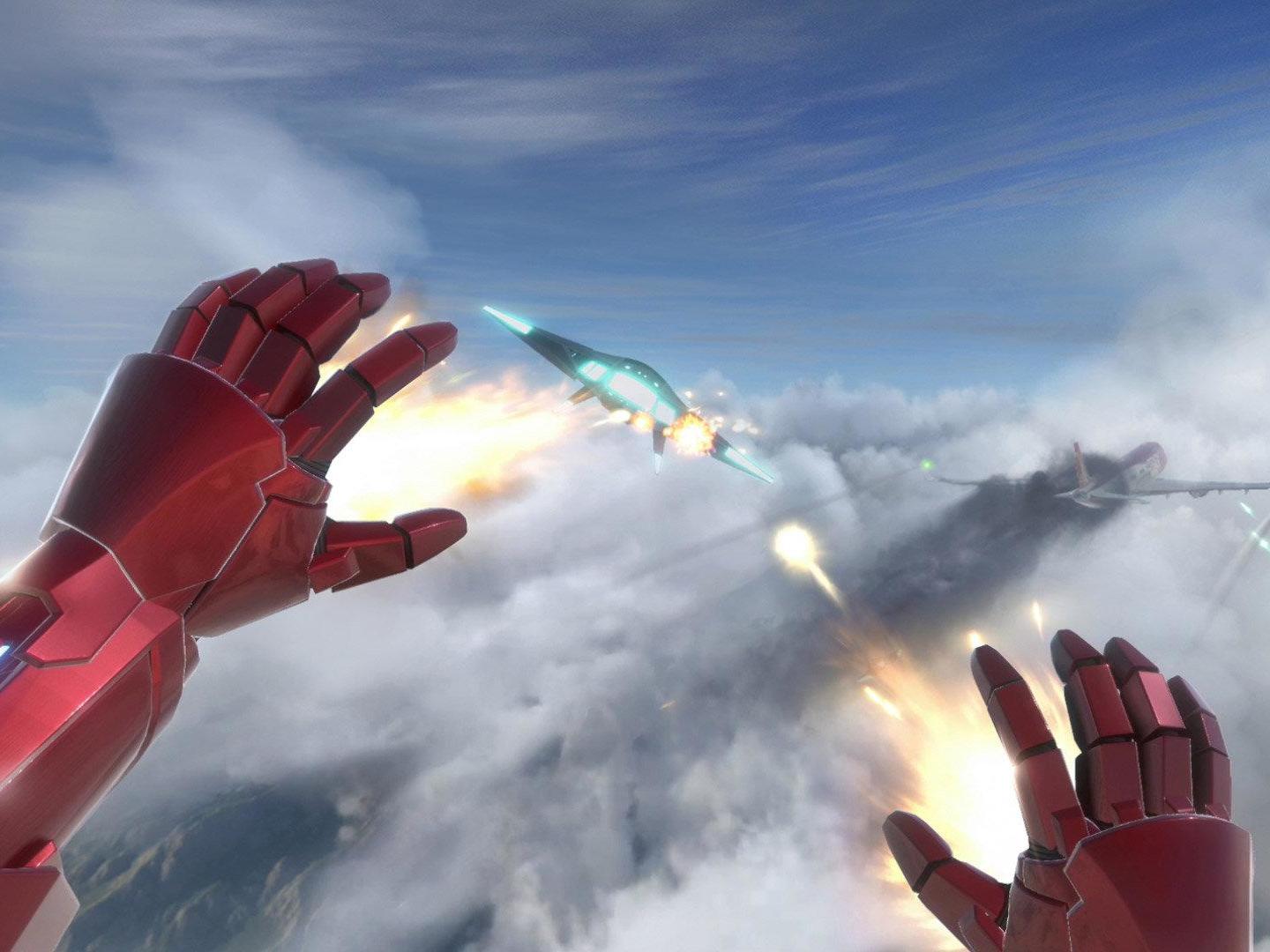Why Marvel comics are perfect for video games – but wrong for cinema
Hollywood’s obsession with serialised superhero franchises is blurring the very definition of cinema, writes Louis Chilton. In video games we find a format that fits the genre like spandex


Your support helps us to tell the story
From reproductive rights to climate change to Big Tech, The Independent is on the ground when the story is developing. Whether it's investigating the financials of Elon Musk's pro-Trump PAC or producing our latest documentary, 'The A Word', which shines a light on the American women fighting for reproductive rights, we know how important it is to parse out the facts from the messaging.
At such a critical moment in US history, we need reporters on the ground. Your donation allows us to keep sending journalists to speak to both sides of the story.
The Independent is trusted by Americans across the entire political spectrum. And unlike many other quality news outlets, we choose not to lock Americans out of our reporting and analysis with paywalls. We believe quality journalism should be available to everyone, paid for by those who can afford it.
Your support makes all the difference.If we live in the age of the superhero, why does nothing ever seem to take flight? Over the past decade, superhero comic book adaptations have monopolised the Hollywood film industry; the sprawling, 23-films-and-counting behemoth known as the Marvel Cinematic Universe sits, moustachioed, at its centre. Using loosely serialised storytelling and logistically impressive crossover elements, the MCU has bent the very medium of cinema to its whim, liberally borrowing from the conventions of TV. With at least 14 more MCU films planned, as well as countless TV series to stream on Disney+, this is a road with no end in sight.
Last year, Martin Scorsese (in)famously bemoaned the domination of comic book adaptations at Hollywood studios, saying they were “not cinema”, and likening them to “theme parks”. Producers, filmmakers and actors from across the MCU rushed to put out statements disputing Scorsese’s claims; it’s fair to say he had hit a nerve. But while most comic book fans seemed to view the Goodfellas director’s words as slander, perhaps they would have been better off embracing them. There’s already a format that feels custom-built for the exploits of Stan Lee’s colourfully clad ubermen – not cinema, but video games.
The suitability of video games as the ultimate platform for superhero adaptation has been obvious for decades; as far back as the late 1970s and 1980s, savvy developers were churning out crude 2D games featuring Superman, Batman and Spider-Man. Of course, modern adaptations – such as 2018’s Marvel’s Spider-Man on PlayStation 4, or Marvel’s Avengers, out in September – are different beasts. Iron Man VR, released on PS4 last Friday, represents a new frontier for the genre – the vicarious theme park thrill distilled into its purest conceptional form. Placing you in the shoes of billionaire hero Tony Stark, the game taps into the central appeal of superhero narratives, giving you the power of flight itself (or an enjoyable imitation, at least).
Superheroes have always been rooted in wish fulfilment and fantasies of power. Video games are perhaps the fullest realisation of this, giving players the agency to use unnatural abilities as they see fit. To paraphrase Spider-Man’s Uncle Ben, video games offer a sense of great power, with none of the responsibility.
Perhaps the watershed moment for superhero games came in 2009, with the release of Batman: Arkham Asylum. Set within the boundaries of the fictional Gotham prison, Asylum was engrossing, unfiltered Batman. Whether you were beating swarms of enemies to a pulp, gliding around environments with batlike stealth, or deploying one of several mechanical gadgets, it all felt right – more authentically nailing the tone of (some of) the comics than any film has ever managed. The Independent called it and the first of its sequels, 2011’s Batman: Arkham City, “two of the best action games ever made”. Superhero films may often struggle for validation in the world of cinema, but in games, they have shown they can spar with the best of ’em.
The first two Arkham games also serve as perfect examples of why games are the ideal format for superhero adaptations. Running roughly 10 to 12 hours, Asylum was short (and tightly paced) for a best-selling video game, but still had ample time to introduce a roster of popular Batman villains. City was longer and looser, but still managed to tell a cohesive, impactful story while indulging every last fanatical impulse of its source material’s fans.
Compare this, for instance, to The Dark Knight, Christopher Nolan’s Michael Mann-inspired DC Comics adaptation, released in 2008. The Dark Knight’s reputation has stood the test of time, more or less – Heath Ledger’s tic-heavy posthumous-Oscar-winning performance is still held up as the gold standard of onscreen supervillainy, and the film proved monumental in legitimising superhero fare in the eyes of the cinema-going public. But it was also overstuffed, and criticisms often focus on the difficulty of balancing two distinct supervillains – Ledger’s Joker and Aaron Eckhart’s Two-Face – both competing for screen-time and attention.
Other attempts to juggle multiple villains have been far less successful. Sam Raimi’s Spider-Man 3 was slammed for its misjudged melange of baddies, throwing Sandman, Venom and New Goblin into a chaotically busy storyline and just hoping for the best, like some kind of half-baked Hadron collider. Hollywood didn’t learn its lesson, either: 2014’s The Amazing Spider-Man 2 was another trilogy of error, pitting Andrew Garfield’s webslinger against a different felonious threesome (Green Goblin, Electro, and Rhino). Marvel have somewhat circumvented this problem by spreading their glut of characters over a couple of dozen films, but you only need to look at Arkham City or PS4 Spider-Man to realise the benefits of longer-form video game storytelling.
Most, if not all, of gaming’s iconic characters are already superheroes – they’re just called something different. Mario can jump to superhuman heights and grow large at will. Sonic the Hedgehog’s super speed puts him at pace with The Flash. Even ostensibly realistic characters, like Tomb Raider’s Lara Croft, Metal Gear Solid’s Solid Snake, or Joel Miller in The Last of Us, are able to move, kill and survive with more sustained gusto than any mere mortal could hope for. Normal, mundane life is seldom depicted in video games, and almost never in blockbuster “AAA” projects; superheroism is the unquestioned default.

There is a practical basis for this. Blockbusters have to prioritise story and characters – even the most garishly shallow superhero flicks still adhere to basic cinematic structures and conventions. Peter Parker will only spend about half of the time he’s on screen actually being Spider-Man – if you’re lucky. Video games also have storylines and character arcs, but they take up far less creative real estate. Instead, games inevitably focus on mechanics, and these mechanics have to be interesting. Superheroes are ideal subject matter, as they have their own unique game mechanics inbuilt. Play as the Hulk, in 2005’s The Incredible Hulk: Ultimate Destruction, for instance, and the gameplay is built around demolition. Play Spider-Man, and you spend your time acrobatically swinging around the city. Content is allowed to dictate form in ways never permitted by mainstream cinema.
Video games also have the benefit of adjusted expectations. While the overall standards of writing and acting in games has improved in recent years – with standouts like this year’s The Last of Us Part II and indie games such as Disco Elysium raising the bar for literary quality – games have traditionally lagged behind older art forms when it comes to things like dialogue and thematic depth. Games like Spider-Man and Arkham Asylum do not find themselves straining for prestige, as films like Logan or Avengers: Endgame so conspicuously do, because they are judged on different merits. Being fun and frivolous is a boon – just look at how many units Nintendo shifts. If a game is compared to a theme park, it might just be the highest compliment.
As the MCU expands into Disney+ series and beyond, it can no longer be considered purely cinema, by any conventional definition. But there’s more than one way to skin a Catwoman. Superheroes will always have a place in video games, even after the MCU finally comes to a close, by which time Disney will no doubt own three of the world’s continents, and all four Chrises (Evans, Hemsworth, Pine and Pratt) will be long dead. Just remember to keep your hands inside the ride at all times – and buckle up.
Join our commenting forum
Join thought-provoking conversations, follow other Independent readers and see their replies
Comments